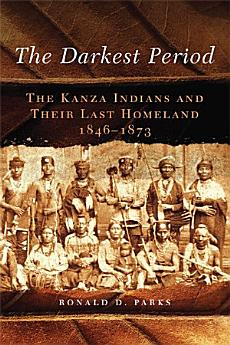The Darkest Period: The Kanza Indians and Their Last Homeland, 1846–1873
About this ebook
The Kanzas confronted powerful Euro-American forces during their last years in Kansas. Government officials and their policies, Protestant educators, predatory economic interests, and a host of continent-wide events affected the tribe profoundly. As Anglo-Americans invaded the Kanza homeland, the prairie was plowed and game disappeared. The Kanzas’ holy sites were desecrated and the tribe was increasingly confined to the reservation. During this “darkest period,” as chief Allegawaho called it in 1871, the Kanzas’ Neosho reservation population diminished by more than 60 percent. As one survivor put it, “They died of a broken heart, they died of a broken spirit.” But despite this adversity, as Parks’s narrative portrays, the Kanza people continued their relationship with the land—its weather, plants, animals, water, and landforms.
Parks does not reduce the Kanzas’ story to one of hapless Indian victims traduced by the American government. For, while encroachment, disease, and environmental deterioration exerted enormous pressure on tribal cohesion, the Kanzas persisted in their struggle to exercise political autonomy while maintaining traditional social customs up to the time of removal in 1873 and beyond.
Ratings and reviews
About the author
Ronald D. Parks is former assistant director of the Historic Sites division of the Kansas State Historical Society and former administrator of the Kaw (Kanza) Mission State Historic Site. He has published numerous articles about the Kanzas.







